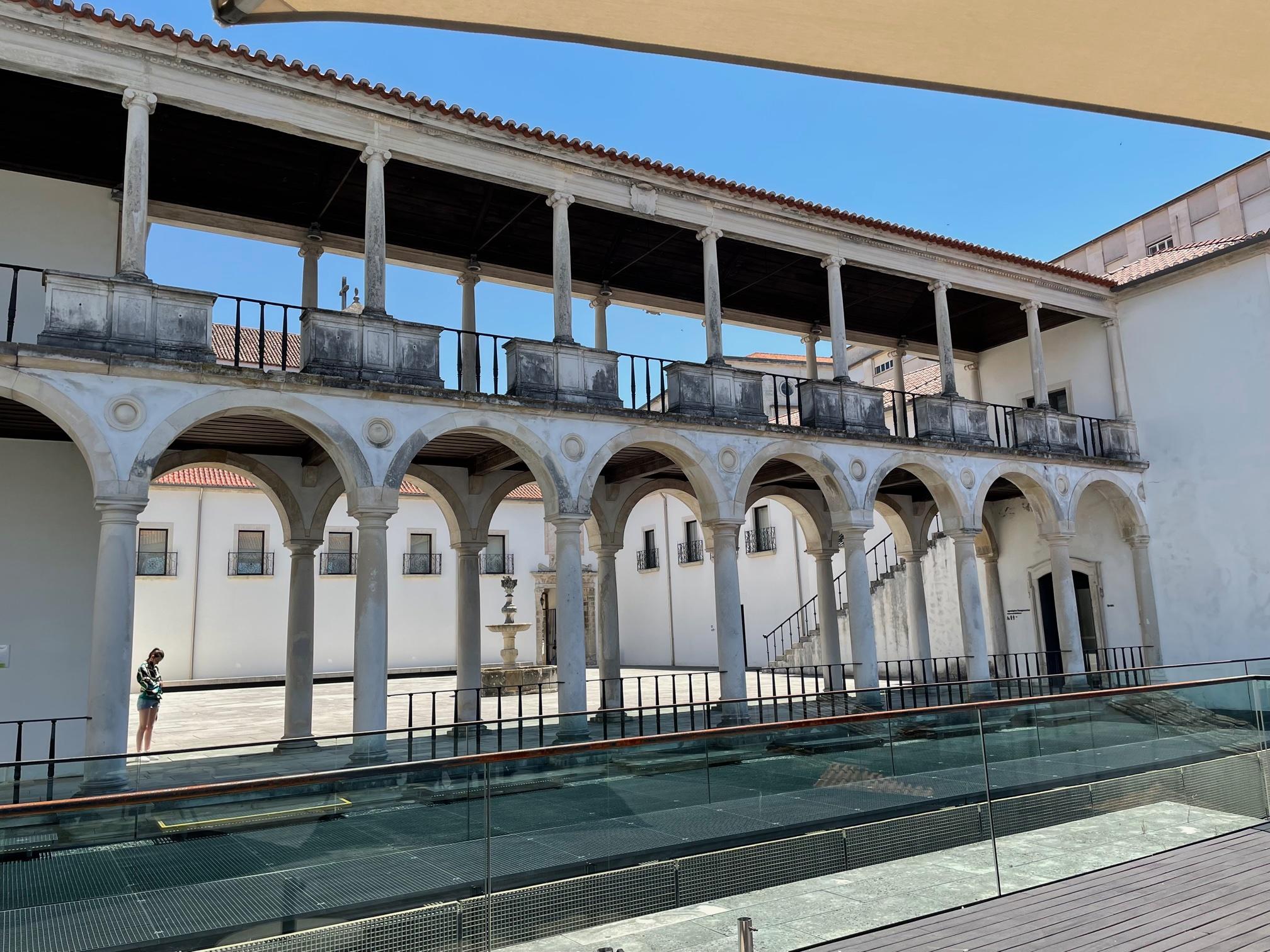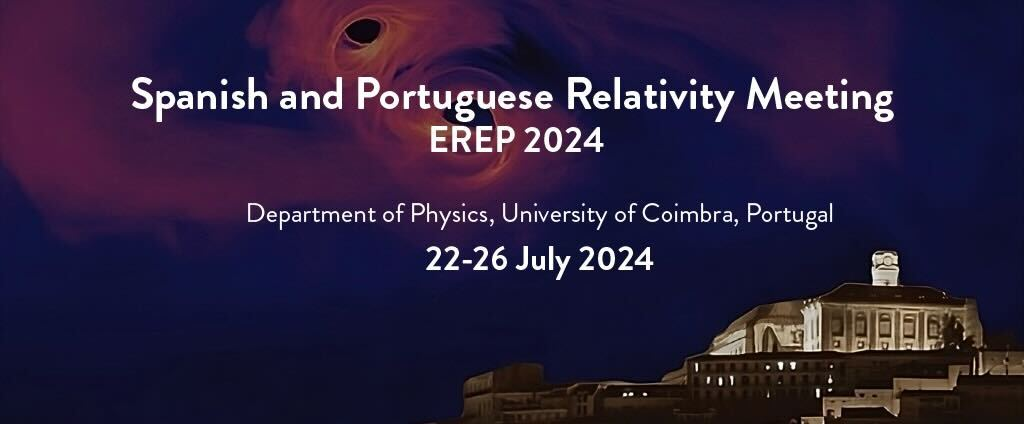Welcome reception
On Monday July 22 there will be a welcome reception for all EREP 2024 participants on the terrace of the Machado de Castro National Museum, only a short walk from the Physics Department, from 18h30 to 20h.
Coimbra’s former Bishop’s Palace, built and expanded between the 12th and 18th centuries, was turned into one of Portugal’s most important national museums in 1913. It stands on the site of a Roman forum, whose 1st century cryptoporticus survives to this day. That subterranean gallery is part of the museum, and displays a few Roman sculptures around its vaulted passageways.
The museum features a Renaissance loggia overlooking the Old Cathedral, a Moorish-style portal, and a baroque church (the Church of São João de Almedina). There are archaeological finds from around the region and the country, Portuguese and Flemish paintings, ceramics, jewelry, textiles, and sculptures from the 11th to the 16th centuries. The museum is dedicated to Joaquim Machado de Castro, Portugal’s leading sculptor in the 18th century, who was born in Coimbra. It’s located down the hill from the university, next to the New Cathedral.

University of Coimbra Guided Tour
The social programme will include, on Thursday July 25, a guided tour to the university's UNESCO World Heritage sites, including the Royal Palace, the Great Hall of Acts, the Royal St. Michael's Chapel and the Baroque (Joanina) Library.
The building currently known as the Royal Palace was built at the end of the 10th century, serving as a fortress for the governor of the city during Islamic rule. In 1131, it became the first Portuguese royal household, the residence of Afonso Henriques, the first king of Portugal. In 1537, during the reign of King John III, the University was permanently relocated from Lisbon to Coimbra, having been established in this building in 1544.
The Geat Hall of Acts is the most important space at the University of Coimbra. It was the old Throne Room, and was the residence of the kings of the first Portuguese dynasty between 1143 and 1383. Important events in the history of Portugal took place here, such as the proclamation of King John I in 1385. After the University opened in the Palace of Schools, this space became the main hall of the University of Coimbra, where the most important ceremonies of the academic life took place. The current design of this hall is the result of renovations carried out in the mid-17th century. The walls were lined with "carpet-like" tiles manufactured in Lisbon. The wooden ceiling was renovated with 172 panels that look like grotesque motifs (representing sea monsters, Indians, mermaids, plants). The walls are lined with the portraits of all of the Portuguese kings - from King Afonso Henriques to King Manuel II - with the exception of the Phillipine dynasty (from 1580 to 1640).
The origins of the Royal St. Michael's Chapel date back to the 11th century after the city was recaptured from the Moors in 1064. Its current architecture dates back to the 16th century during the reign of King Manuel. The decor, especially the tiles, was added throughout the course of the 17th century. Its interior also boasts the majestic Iberian organ, consisting of some 2000 pipes, installed between 1733 and 1737. Today, the chapel continues to be used for religious ceremonies and concerts.
The Baroque Library is the best example of Portuguese Baroque and is considered to be one of the richest European libraries. It is also known as the Joanina Library in honour and memory of King John V, who authorised its construction and whose portrait, painted by Domenico Duprà, distinctly dominates the space inside the Noble Floor. Construction on the Baroque Library was completed in 1728. It functioned as the University Library from 1777 until the first half of the 20th century. It holds 60 thousand books, dating from the 16th century to the 18th century, on a wide variety of topics that can still be consulted today.
For more information please visit the University of Coimbra's tourism webpage.

Conference Dinner
The conference dinner will be held on Thursday, July 25, at Quinta das Lágrimas Hotel, about 30 minutes walking distance from the Department of Physics, across the Mondego River.

This 18th century palace surrounded by 18 acres of lush gardens was a former hunting ground for the Portuguese royal family and owes its name ("The estate of tears") to the legend of Pedro and Inês, one of the most famous stories in the Portuguese history. Prince Pedro, heir to the throne and later King Pedro I, had a forbidden love affair with his wife's lady-in-waiting Inês de Castro for many years, starting in 1340. The tryst ended in 1355 when Pedro's father, King Afonso IV, who suspected Inês and her family to have designs for his throne, orders his henchmen to kill her. But unbeknownst to the king, when Pedro's wife died, he secretly married Inês. After his father's death, Pedro became King of Portugal in 1357, and ordered the men responsible for his beloved's murder to be killed. He also wanted the courtiers to acknowledge her as their new queen and had Inês' body buried in a royal tomb. But the story takes a chilling turn when King Pedro ordered that Inês' body was exhumed and put on the throne beside him for the entire court to swear allegiance to their queen. They had to bend their knee before her decaying corpse and kiss her hand.
The fountain, "Fonte das Lágrimas", born of her tears, stands on the property where Inês was killed and supposedly her blood still stains its stone bottom. For centuries, the estate is reportedly haunted by the ghost of Inês, who is heard crying on the grounds, eternally searching for her lost love, Pedro.

